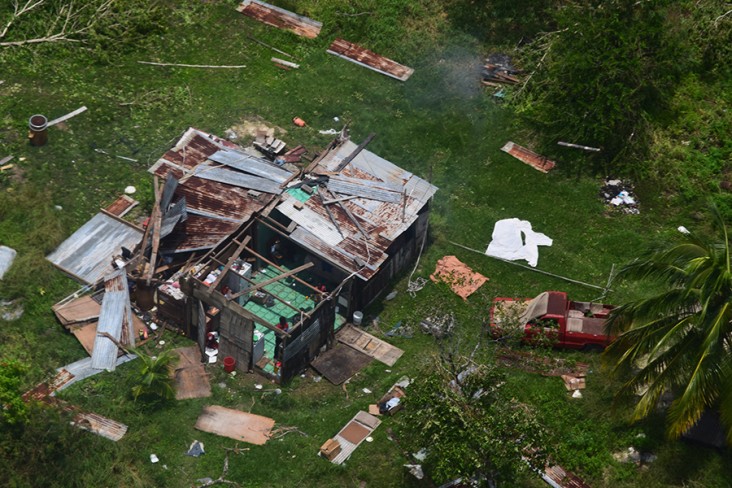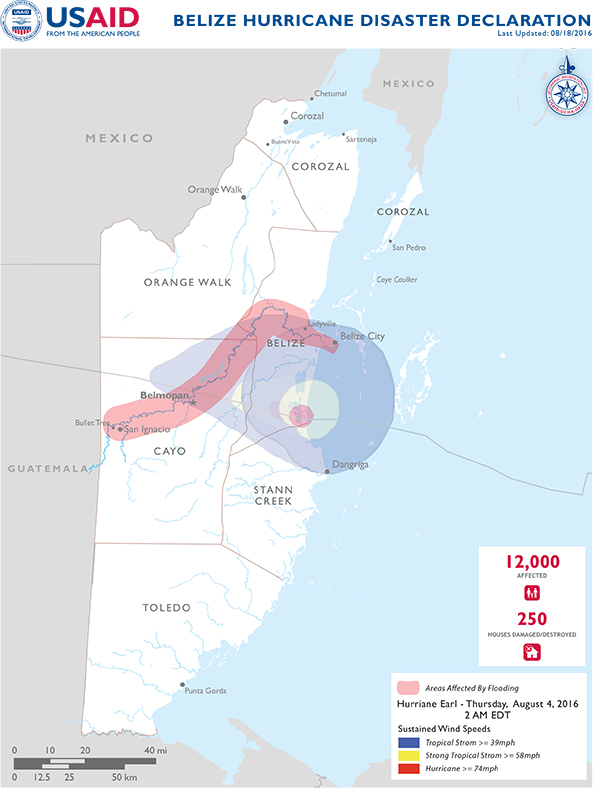- What We Do
- Agriculture and Food Security
- Democracy, Human Rights and Governance
- Economic Growth and Trade
- Education
- Environment and Global Climate Change
- Gender Equality and Women's Empowerment
- Global Health
- Humanitarian Assistance
- Transformation at USAID
- Water and Sanitation
- Working in Crises and Conflict
- U.S. Global Development Lab
Speeches Shim

Latest Belize Map
Belize Map - 08-18-2016 ![]() (pdf - 235k)
(pdf - 235k)
Key Developments
Hurricane Earl made landfall near Belize City, Belize, on August 3, 2016, and tracked westward toward Guatemala and Mexico, affecting up to 12,000 people in Belize City, the Belize River Valley, and the town of San Ignacio. As of August 4, 2016, the hurricane and resultant flooding had displaced more than 3,000 people—nearly 100 of whom remained displaced as of August 15, 2016—and damaged or destroyed approximately 250 houses, as well as public infrastructure, including several bridges. To prepare for the storm and mitigate its impacts, the Government of Belize (GoB) issued hurricane watches and warnings. As of August 18, 2016, the GoB was providing shelter materials to affected households to repair minor damages and coordinating with local construction firms for repairs to more severely damaged residences. The GoB estimated response efforts will require approximately $6 million, and stated that immediate needs in affected areas include shelter repair items, such as hurricane straps, nails, and zinc roofing material, as well as chlorine tablets, food, hygiene kits, and safe drinking water.
On August 18, 2016, U.S. Ambassador Carlos R. Moreno declared a disaster in Belize due to the effects of Hurricane Earl. In response, USAID’s Office of U.S. Foreign Disaster Assistance (USAID/OFDA) provided $50,000 to the Belize Red Cross for emergency relief supplies for vulnerable families affected by the hurricane. In addition, USAID/OFDA deployed a sub-regional manager and activated two local surge capacity consultants in Belize to assess the humanitarian situation, liaise with national authorities, and coordinate response activities.
Background
Belize is vulnerable to a range of natural hazards, including floods, forest fires, and volcanic eruptions. When disaster strikes, USAID/OFDA works with local and national government officials, civil society actors, and non-governmental organizations to address humanitarian needs and assist GoB-led relief efforts. USAID/OFDA also supports ongoing disaster risk reduction activities and capacity-building initiatives for disaster response throughout Central and South America.


Comment
Make a general inquiry or suggest an improvement.